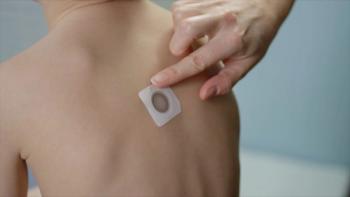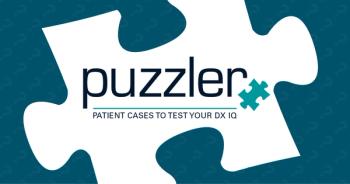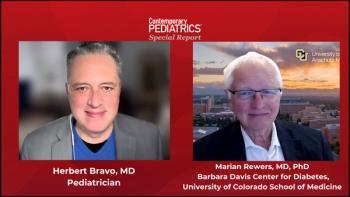Background
Some studies suggest that lymphadenitis is an ailment that affects approximately 40% of healthy children.1 There is a broad differential to be considered for lymphadenitis, although there are guiding clinical clues such as duration, location, and associated symptoms. The prognosis for lymphadenitis is generally favorable, with clinical improvement typically observed within a few days of treatment, unless an underlying malignancy is present.2
Tonsillectomy is one of the most common surgeries performed on children in the United States, with approximately 530,000 completed each year.3 Indications include tonsillar hypertrophy, recurrent infections, neoplasm, and chronic tonsillitis. Short-term complications of tonsillectomy are well documented; however, long-term complications remain poorly characterized.4
Both lymphadenitis and tonsillectomy are common in pediatric patients. Given the broad differential diagnosis for lymphadenitis and the limited understanding of long-term complications following tonsillectomy, this case highlights a potential association between these 2 frequently encountered pathologies.
Case presentation
A 12-year-old female with no significant past medical history presents to our Emergency Department with three days of right-sided neck swelling, which has progressively worsened. The patient notes some pain with chewing on the right side, which has led to decreased intake. The parents report no known fevers but note that other members of the family have recently been sick with a suspected viral illness. The family also reports that this is a recurrent issue that occurs two to three times a year and endorses that it began after her tonsillectomy procedure. They state that symptoms typically resolve after a course of antibiotics. She has been seen at an ENT clinic for these concerns in the past, with reportedly no solution. She has no other known medical diagnoses or surgeries and is not taking any medications. She lives with her parents and three siblings and is in 7th grade.
Her vital signs, including temperature, are within normal limits upon arrival. Physical exam is significant for an indurated, moderately-tender, swelling approximately 2 cm in diameter located anteroinferior to the mastoid process. An oral exam is unremarkable aside from reported dental discomfort elicited by right-sided bite testing. Some residual tonsillar tissue is noted. Upon consulting with the team, labs and imaging are ordered, including CBC, CMP, CRP/ESR, LDH, uric acid serum tests, and diagnostic ultrasound. The lab values demonstrate mild hemoconcentration (possibly due to living at high altitude) and a mildly elevated lymphocyte count. Ultrasound findings include limited images showing bilateral hypoechoic foci in the parotid gland and upper neck regions, and a broad differential is provided. Due to these nonspecific findings, a blood culture is ordered, which produces no growth.
Following lab and imaging results, the patient and her parents are reassured that there are no obvious signs of malignancy or other concerning diagnoses and are discharged with oral antibiotics for possible atypical or bacterial lymphadenitis and a referral to ENT. The family agrees to the proposed plan.
Differential diagnosis
The differential (Table) was narrowed due to the location of the swelling, absence of recent travel or contact with domestic cats, lack of systemic symptoms such as night sweats or weight loss, as well as a reassuring physical exam and laboratory studies.
Discussion
Lymphadenitis has many common causes, and to narrow down a differential diagnosis, factors such as duration, associated symptoms, and bilateral versus unilateral involvement are considered (Figure).2 Patients with acute duration and bilateral involvement are more likely to have an underlying viral illness, whereas patients with acute duration and unilateral involvement are more likely to have an underlying bacterial infection. Treatment is typically supportive or with oral antibiotics, but blood cultures, throat cultures, ultrasound imaging, or incision and drainage can also be considered. When lymphadenitis is subacute or chronic, the workup is usually more extensive and may include a CBC, inflammatory markers, liver function tests, uric acid, lactate dehydrogenase, Interferon Gamma Release Assay, Tuberculin skin test, and serology testing for different infectious agents. When there is unilateral involvement in this setting, rare infectious causes or malignancy are more likely. On the other hand, if there is bilateral involvement, viral etiologies are more likely. Signs and symptoms help differentiate infectious causes from malignant ones. Treatment for subacute or chronic lymphadenitis usually involves antibiotics and/or excision. The prognosis for lymphadenitis is usually very good, and improvement is expected within a few days of treatment unless there is malignancy.2,5
Tonsillectomy is also very common in children, and 2 different types exist: total and subtotal. Subtotal tonsillectomy is associated with faster recovery times and less postoperative complications, but an increased likelihood of recurrence.6 The most common documented complications after tonsillectomy include pain, bleeding, dehydration with associated nausea and vomiting, and respiratory compromise due to swelling. The long-term complications of tonsillectomy are less well known. There has been a reported association between tonsillectomy and asthma, although this relationship has not been established as causative. Studies examining the relationship between tonsillectomy and allergies or other respiratory diseases have yielded conflicting results.4
A literature review was conducted through Science Direct and PubMed using ‘cervical lymphadenitis’, ‘tonsillectomy’, ‘cervical lymphadenopathy’, ‘post-tonsillectomy’, ‘remnant tonsil’, ‘remnant tonsillar tissue’, ‘recurrent’, and ‘peritonsillar abscess’ as key search terms. Four articles were found that matched the criteria of patients having head or neck lymph tissue infection after tonsillectomy. A similar search through the American Academy of Pediatrics Journal found zero articles matching this criterion. One study from the UK found seven patients with subtotal tonsillectomies experiencing recurrent lymphadenitis and jugulodigastric lymphadenopathy, similar to our patient. Six out of these seven patients opted to have a second surgery completed to remove the remnant tonsillar tissue, and all of these patients experienced resolution of their symptoms.7 While peritonsillar abscesses are distinct from lymphadenitis, they have also been associated with tonsillectomies in reported cases. A review article of peritonsillar abscess cases after tonsillectomy cited 11 cases of this co-occurrence. Of these, there was only one pediatric case.8 Two other case reports of adults connected these events as well.9,10 They also suggested remnant tonsillar tissue as a possible cause, citing that it is extremely difficult to remove all tonsillar tissue during a tonsillectomy, and any remaining tissue can hypertrophy and become a nidus for infection. This raises the question of whether there is a causative relationship between subtotal tonsillectomies and recurrent lymph tissue infection. In cases like our patient’s, where cervical lymphadenitis develops, the connection may be less intuitive than with more directly related infections such as peritonsillar abscesses. This is why, in patients who experience recurrent tonsillitis or lymph tissue abscess who have gone through the diagnostic pathway without a clear causative agent for their recurring symptoms, total tonsillectomy should be considered as a possible solution. However, further research is needed to describe the exact relationship between these two events, specifically in pediatric populations, as our case is the first known report.
Take home messages
- When patients present with lymphadenopathy, it is important to follow the diagnostic framework to narrow down the differential
- Past medical and surgical history can play an important factor in diagnosing the patient
- In patients who are post-tonsillectomy, are having recurrent lymphadenopathy, and all other causes have been ruled out, it may be useful to consider recommending to an ENT provider to consider repeat tonsillectomy, in which any remnant tonsillar tissue is removed
References
- Niedzielska G, Kotowski M, Niedzielski A, Dybiec E, Wieczorek P. Cervical lymphadenopathy in children—incidence and diagnostic management. International Journal of Pediatric Otorhinolaryngology. 2007;71(1):51-56. doi:10.1016/j.ijporl.2006.08.024
- Healy CM, Edwards MS. Cervical lymphadenitis in children: Diagnostic approach and initial management.In: Post TW, ed. UpToDate. UpToDate; 2025. Accessed January 31, 2025. https://www-uptodate-com.proxy.rvu.edu/contents/cervical-lymphadenitis-in-children-diagnostic-approach-and-initial-management?search=lymphadenitis&source=search_result&selectedTitle=1%7E150&usage_type=default&display_rank=1
- Fischer DA. Tonsillectomy. Background, Epidemiology, Pathophysiology. March 4, 2024. Accessed February 1, 2025. https://emedicine.medscape.com/article/872119-overview?form=fpf#a7.
- Messner AH. Tonsillectomy (with or without adenoidectomy) in children: Postoperative care and complications.In: Post TW, ed. UpToDate. UpToDate; 2025. Accessed January 31, 2025. https://www-uptodate-com.proxy.rvu.edu/contents/tonsillectomy-with-or-without-adenoidectomy-in-children-postoperative-care-and-complications?search=tonsillectomy&source=search_result&selectedTitle=2%7E89&usage_type=default&display_rank=2#H178699651
- Freeman AS, Friedberg JW, Aster JC. Clinical presentation and initial evaluation of non-Hodgkin lymphoma. In: Post TW, ed. UpToDate. UpToDate; 2024. Accessed January 31, 2025.https://www-uptodate-com.proxy.rvu.edu/contents/clinical-presentation-and-initial-evaluation-of-non-hodgkin- lymphoma?search=.%20Clinical%20presentation%20and%20initial%20evaluation%20of%20non-Hodgkin%20lymphoma&source=search_result&selectedTitle=1~150&usage_type=default&display_rank=1
- KirkhamEM. Adenotonsillectomy for obstructive sleep apnea in children.In: Post TW, ed. UpToDate. 2025. Accessed January 31, 2025. https://www-uptodate-com.proxy.rvu.edu/contents/adenotonsillectomy-for-obstructive-sleep-apnea-in-children?sectionName=Surgical%20techniques&search=tonsillectomy%20complications&topicRef=88054&anchor=H2865702269&source=see_link#H2865702269
- Mangat KS, Dutt SN, Chavda SV, Pahor AL. Tonsillar remnants and painful cervical lymphadenopathy. International Congress Series. 2003;1240:693-694. doi:10.1016/s0531-5131(03)00800-8
- Farmer S, Khatwa M, Zeitoun H. Peritonsillar abscess after tonsillectomy: A review of the literature. The Annals of The Royal College of Surgeons of England. 2011;93(5):353-355. doi:10.1308/003588411x579793
- Mirza J, Coetzee S, Belaunzaran M, Trenschel RW, Borisiak T. Recurrent peritonsillar abscess in post-tonsillectomy patient. Cureus. Published online February 16, 2022. doi:10.7759/cureus.22271
- Kerketta N. Peritonsillar abscess: 46 years after tonsillectomy. Otolaryngology Case Reports. 2021;19:100286. doi:10.1016/j.xocr.2021.100286







